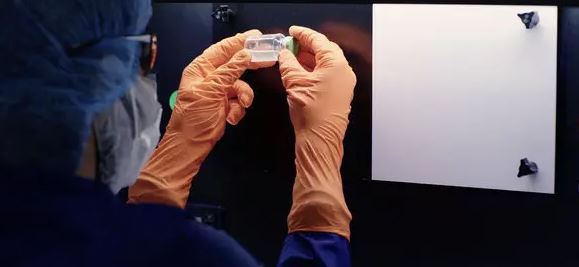FDA Approves Revolutionary Treatments for Sickle Cell Disease

The U.S. Food and Drug Administration (FDA) has marked a historic moment in medical science by approving two groundbreaking gene therapies, Casgevy and Lyfgenia, for the treatment of sickle cell disease (SCD). This decision represents a significant leap forward in the management of a condition that affects about 100,000 people in the United States, predominantly those of African American and Hispanic descent.
Understanding Sickle Cell Disease
Sickle cell disease is an inherited blood disorder characterized by a mutation in hemoglobin, the protein in red blood cells that carries oxygen. This mutation leads to red blood cells developing a crescent or “sickle” shape, impeding blood flow and limiting oxygen delivery to the body’s tissues. This results in severe pain, organ damage, vaso-occlusive events (VOEs), and potentially life-threatening complications.
Casgevy: A CRISPR-Cas9 Based Therapy
Casgevy, developed by Vertex Pharmaceuticals Inc., is the first FDA-approved therapy that utilizes the innovative CRISPR/Cas9 genome editing technology. This treatment involves modifying the patient’s hematopoietic (blood) stem cells with CRISPR/Cas9 to increase the production of fetal hemoglobin, which helps prevent the sickling of red blood cells. It is indicated for SCD patients aged 12 and older with a history of recurrent vaso-occlusive crises (VOCs).
Lyfgenia: Gene Modification Using a Lentiviral Vector
Developed by Bluebird Bio Inc., Lyfgenia employs a lentiviral vector for genetic modification of the patient’s blood stem cells. This therapy produces HbA^{T87Q}, a hemoglobin similar to the normal adult hemoglobin in individuals without SCD. The presence of HbA^{T87Q} in red blood cells reduces their risk of sickling and obstructing blood flow. Like Casgevy, Lyfgenia is approved for patients 12 years and older with SCD and a history of VOEs.
The Process and Efficacy of Treatments
Both Casgevy and Lyfgenia are administered as a one-time, single-dose infusion following a myeloablative conditioning process, which involves high-dose chemotherapy to prepare the bone marrow for receiving the modified cells. In clinical trials, a significant number of patients treated with Casgevy experienced freedom from severe VOC episodes, and a majority of patients treated with Lyfgenia achieved a complete resolution of VOEs.
Potential Side Effects and Long-Term Observations
The most common adverse effects for patients treated with Casgevy and Lyfgenia include low levels of platelets and white blood cells, mouth sores, and other symptoms consistent with chemotherapy and the underlying disease. These treatments will be followed by long-term studies to evaluate their safety and effectiveness further.
Implications for the Future
The approval of Casgevy and Lyfgenia heralds a new era in the treatment of SCD and underscores the potential of gene therapy in addressing rare and debilitating conditions. As the first therapies of their kind, they offer hope for more targeted and effective treatments, significantly impacting public health and the lives of individuals affected by SCD.





